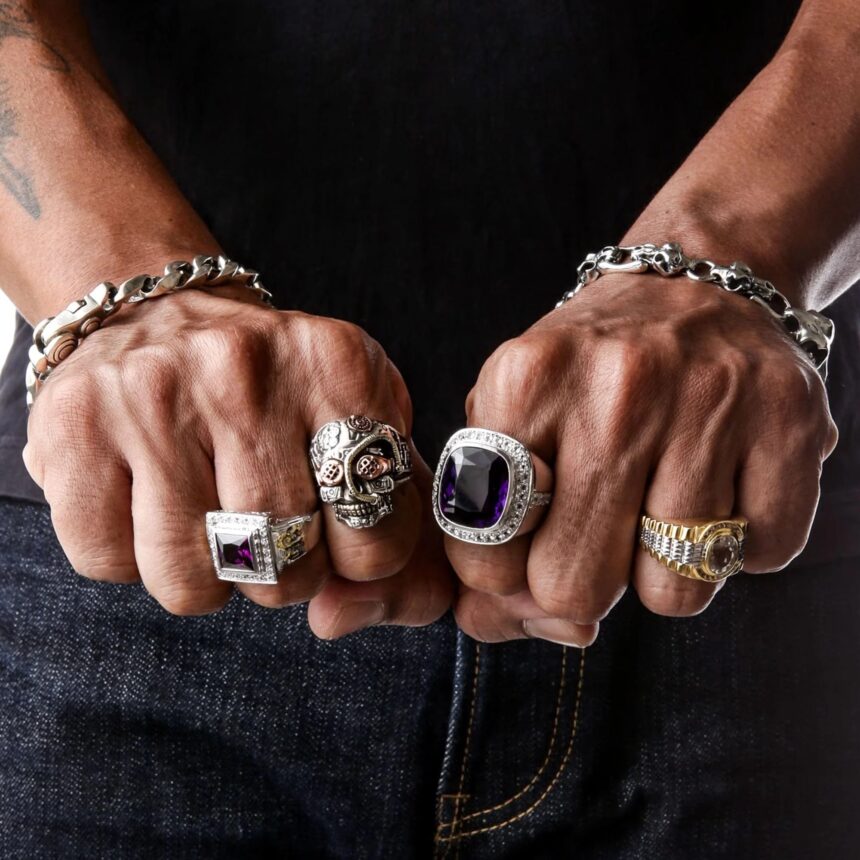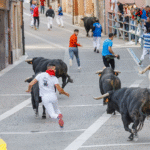The skull. For many in the Western world, it’s an instant symbol of danger, a pirate’s flag snapping in the wind, or the gritty emblem of a biker roaring down the highway. It speaks of rebellion, mortality, and a defiant embrace of the darker side of life. But to confine this universal icon to a single meaning is to ignore a rich and fascinating global history.
The skull on your finger is a conversation piece, but the conversation is far deeper than you might imagine. It’s a symbol that has been revered, celebrated, and interpreted in profoundly different ways across cultures and throughout time. From a vibrant celebration of ancestors in Mexico to a profound tool for spiritual enlightenment in the mountains of Tibet, the skull tells a thousand different stories.
So, let’s take a journey across the globe to unravel the complex and powerful symbolism behind your skull ring. Understanding its diverse heritage will give you a new appreciation for the statement piece you’ve chosen to wear.
The Western Lens: Memento Mori and The Spirit of Rebellion
The modern Western interpretation of the skull is largely built on two powerful concepts: remembrance and rebellion.
The first, Memento Mori, is a Latin phrase meaning “remember you must die.” This wasn’t originally a morbid obsession but a philosophical call to action. During the late Middle Ages and the Renaissance, vanitas paintings often featured a skull alongside wilting flowers, guttering candles, and fleeting luxuries. The message was clear: life is short and fragile, so live it with purpose, virtue, and awareness of your mortality. The skull was a reminder not to get lost in the trivialities of life, but to focus on what truly matters.
Over time, this philosophical reminder was adopted and twisted by those living on the fringes of society. The idea of “remember you must die” morphed into “live fast, die young.” Pirates adopted the Jolly Roger as a flag of terror and freedom from the law. Later, this torch was passed to the outlaws of the modern era: motorcycle clubs and rock ‘n’ roll legends. For them, the skull became a badge of honor—a symbol of non-conformity, brotherhood, and a conscious rejection of mainstream rules. This rebellious spirit is perfectly captured in the incredibly detailed skull rings for men that have become a hallmark of biker and rock fashion. It’s a statement that you live by your own code.
The Mexican Calavera: A Joyful Celebration of Life and Ancestry
Travel south to Mexico, and the skull’s meaning undergoes a brilliant and colorful transformation. Here, particularly during the Día de los Muertos (Day of the Dead) festival, the skull, or calavera, is not a symbol of fear, but one of love, remembrance, and celebration.
This pre-Hispanic tradition, which has been blended with Catholic beliefs, views death not as an end, but as a natural part of the human cycle. During Día de los Muertos, families create altars (ofrendas) to honor their deceased relatives, believing that the spirits of the dead return to visit the living. These altars are adorned with marigolds, candles, the favorite foods of the departed, and, most famously, sugar skulls.

These are not the menacing skulls of Western lore. Sugar skulls are whimsical, decorated with brightly colored icing, sequins, and foil. They are often inscribed with the names of the departed and are given as gifts to both the living and the dead. The calavera represents the ancestor who is being honored. It’s a joyful, vibrant tribute that says, “We remember you, we love you, and we celebrate the life you lived.” Wearing a skull in this context is an act of connection to family, heritage, and the beautiful, unbroken circle of life and death.
Tibetan Buddhism: A Symbol of Emptiness and Great Wisdom
In the serene and spiritual landscape of Tibetan Buddhism, the skull takes on its most profound and complex meaning. Here, it is not about social rebellion or even familial remembrance, but about deep spiritual truth.
In Tibetan art, deities and powerful yogis are often depicted with skull iconography. For example, wrathful protector deities might wear a crown of five skulls, symbolizing the transformation of the five negative afflictions of human nature (anger, greed, pride, envy, and ignorance) into wisdom. One of the most significant representations is a powerful ritual implement known as a Kapala, which is a cup made from the top part of a human skull. It is used in tantric rituals not for a morbid purpose, but as a vessel for offerings and a potent teaching tool.
The skull in this context represents several key Buddhist concepts. Primarily, it is a stark reminder of impermanence. All beings, no matter how powerful, will eventually die. Meditating on the skull helps practitioners detach from their ego and the fleeting pleasures of the material world. Furthermore, it symbolizes emptiness (Śūnyatā)—the ultimate nature of reality, which is empty of inherent existence. By confronting the skull, one confronts the nature of reality itself, a crucial step on the path to enlightenment and compassion for all living things. It is a symbol that a true understanding of death leads to a more spiritually awakened life.
Echoes Through Ancient Civilizations
The skull’s power as a symbol is not a recent phenomenon. Ancient cultures around the world also recognized its significance:
- The Celts: For the ancient Celts, the head and skull were considered the “seat of the soul” and a source of immense power. They would often display the skulls of their enemies at the entrance to their settlements, believing it offered protection and captured the strength of the vanquished foe.
- The Aztecs: The predecessors to modern Mexican culture, the Aztecs, created massive tzompantli, or skull racks, displaying thousands of skulls from sacrificial victims. While gruesome to modern eyes, for the Aztecs, this was a sacred part of their cosmology, an offering to the gods that ensured the continuation of the world.
- Secret Societies: From alchemy to the Freemasons, skulls have often been used in initiation rituals to symbolize death of the old self and rebirth into a new level of knowledge and understanding.
The Final Word: A Canvas for Your Own Story
From a philosopher’s reminder and a rebel’s badge to a loving tribute and a spiritual key, the skull is a truly universal symbol with a world of meaning packed into its iconic shape. It is a powerful testament to the human condition, reflecting our deepest questions about life, death, and our place in the universe.
When you wear a skull ring, you are carrying that entire global legacy with you. The beauty of such a multi-layered symbol is that it becomes a canvas for your own story. Its meaning is a blend of this rich history and the personal significance you imbue it with. It’s more than just an accessory; it’s a statement of awareness, a nod to a global heritage, and a powerful symbol of your own journey.













